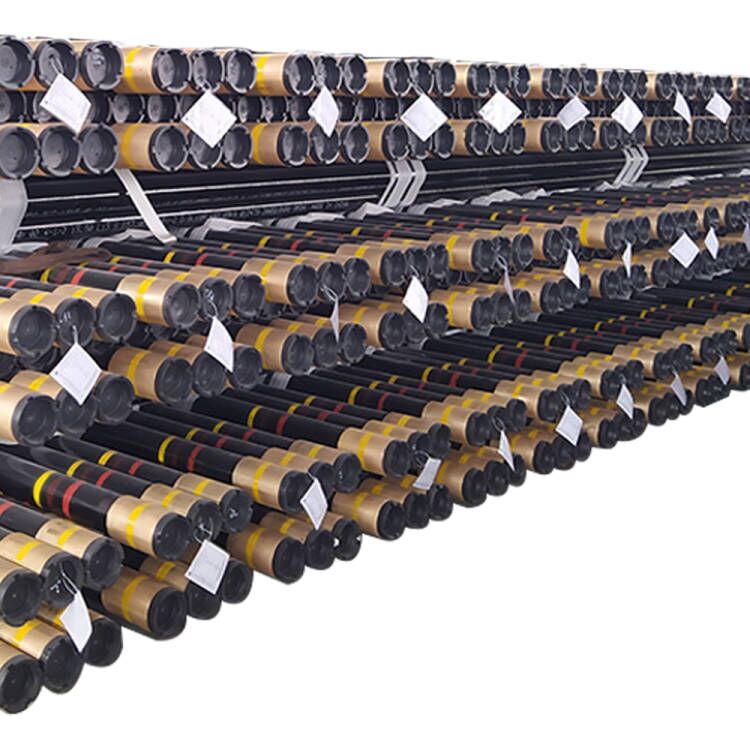Table of Contents
Benefits of Using Production Tubing in Oil and Gas Wells
Production tubing is a critical component in oil and gas wells, playing a key role in the extraction and transportation of hydrocarbons from the reservoir to the surface. One common type of production tubing used in the industry is the 3-1/2″ tubing, which weighs 9.3 lbs. per foot and is made of N-80 grade steel. This tubing is equipped with External Upset Ends (EUE) and has a length of R2, which is approximately 31 feet.
One of the primary benefits of using production tubing in oil and gas wells is its ability to withstand high pressure and temperature conditions. The N-80 grade steel used in the construction of the tubing is known for its excellent mechanical properties, making it suitable for use in demanding environments. This ensures that the tubing can effectively contain the hydrocarbons being produced without any risk of failure.
Additionally, the 3-1/2″ tubing size is commonly used in oil and gas wells due to its optimal balance between flow capacity and strength. The larger diameter of the tubing allows for a higher flow rate of hydrocarbons, while the 9.3 lbs. per foot weight provides the necessary structural integrity to support the tubing in the wellbore. This ensures efficient production operations and minimizes the risk of tubing failure during operation.
The External Upset Ends (EUE) on the tubing also play a crucial role in ensuring a secure connection between individual joints of tubing. The external upset design provides a larger contact area between the tubing joints, enhancing the overall strength and integrity of the connection. This reduces the risk of leaks or failures at the joints, ensuring a reliable and efficient production process.
Furthermore, the R2 length of the tubing offers flexibility in well design and completion. The 31-foot length allows for easier handling and installation of the tubing in the wellbore, reducing the time and effort required for completion operations. This makes the production process more efficient and cost-effective, ultimately leading to increased productivity and profitability for oil and gas operators.
In addition to its technical advantages, the use of production tubing in oil and gas wells also offers environmental benefits. By effectively containing and Transporting hydrocarbons from the reservoir to the surface, production tubing helps prevent leaks and spills that can harm the Environment. This ensures that the extraction process is carried out in a safe and environmentally responsible manner, minimizing the impact on surrounding ecosystems.
Overall, the use of production tubing in oil and gas wells offers a wide range of benefits, from its ability to withstand high pressure and temperature conditions to its optimal flow capacity and structural integrity. The N-80 grade steel construction, 3-1/2″ size, EUE ends, and R2 length of the tubing all contribute to its effectiveness in enhancing production operations and ensuring a safe and efficient extraction process. By utilizing production tubing in oil and gas wells, operators can maximize productivity, minimize risks, and promote environmental sustainability in their operations.
Installation and Maintenance Tips for Production Tubing in Oil and Gas Wells
Production tubing is a critical component in oil and gas wells, serving as a conduit for the flow of hydrocarbons from the reservoir to the surface. Proper installation and maintenance of production tubing are essential to ensure the efficient and safe operation of the well. In this article, we will discuss some important tips for the installation and maintenance of production tubing, focusing on the 3-1/2″ diameter, 9.3 lbs./ft., N-80 grade, EUE connection, and R2 length tubing commonly used in oil and gas wells.

When installing production tubing, it is important to follow the manufacturer’s recommendations and industry best practices to ensure the tubing is properly installed and secured. The tubing should be inspected for any defects or damage before installation, and any issues should be addressed before proceeding. Proper handling and lifting techniques should be used to prevent damage to the tubing during installation.
Once the tubing is installed, it is important to monitor its performance regularly to ensure it is functioning as intended. Regular inspections should be conducted to check for corrosion, wear, or other signs of damage that could compromise the integrity of the tubing. Any issues should be addressed promptly to prevent further damage and ensure the safe operation of the well.
In addition to regular inspections, proper maintenance of production tubing is essential to prolong its lifespan and prevent costly repairs or replacements. Regular cleaning and flushing of the tubing can help remove debris and buildup that could restrict the flow of hydrocarbons. Corrosion inhibitors should be used to protect the tubing from corrosion, especially in wells with corrosive fluids.
Proper support and anchoring of the tubing are also important to prevent buckling or collapse under the weight of the hydrocarbons flowing through it. Anchors and centralizers should be installed at regular intervals to support the tubing and prevent it from sagging or shifting. Proper support can help prevent wear and damage to the tubing, prolonging its lifespan and ensuring the safe operation of the well.
In conclusion, proper installation and maintenance of production tubing are essential to ensure the efficient and safe operation of oil and gas wells. By following the manufacturer’s recommendations and industry best practices, operators can ensure that their production tubing is installed correctly and maintained properly. Regular inspections, cleaning, and support can help prevent damage and prolong the lifespan of the tubing, saving operators time and money in the long run. By taking care of their production tubing, operators can ensure the continued success of their oil and gas operations.
